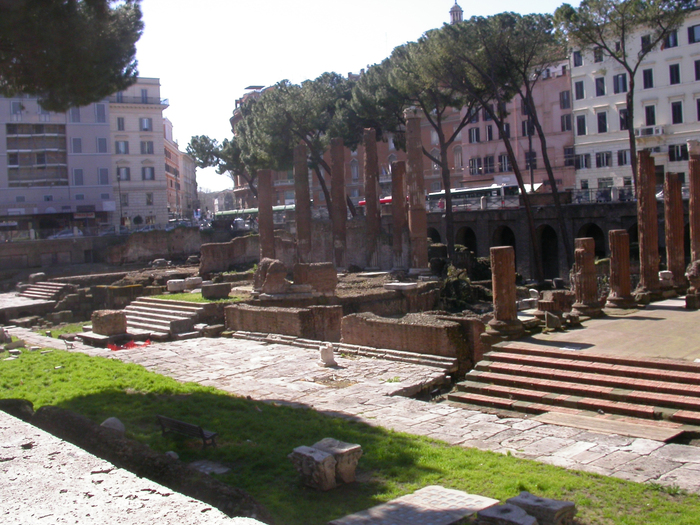
All four temples in a row. There is a fifth structure, between Temple A and B, that one site calls "Temple E" but makes no further notes of it. It is more likely that this is the remains of the statia aquarum, which officiated the city water supply.

All four temples in a row. There is a fifth structure, between Temple A and B, that one site calls "Temple E" but makes no further notes of it. It is more likely that this is the remains of the statia aquarum, which officiated the city water supply.
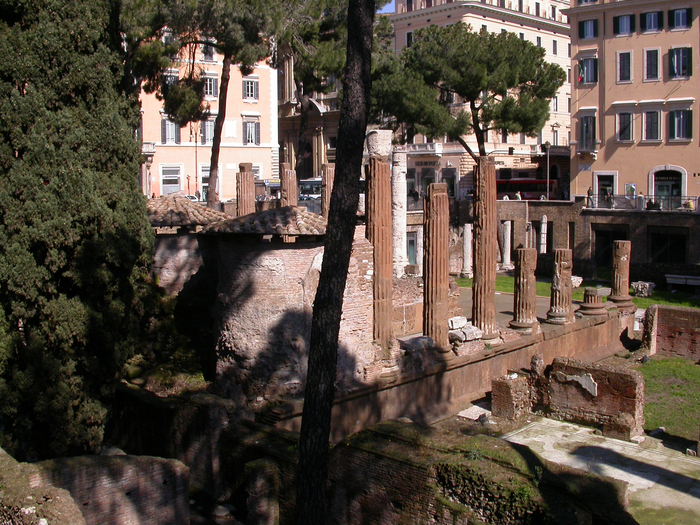
The bricks at the bottom of this picture are the remains of what was destined to be a much more famous monument than the temples. In 55 BC Pompey financed the construction of the first brick theater in Rome, in order to improve his popularity with the people. It served as a theater for entertainment, as well as a meeting place for the Senate. To avoid censure for building a permanent theater, he crowned the structure with a temple to Venus Victrix, so that the seats in the theater could be considered stairs leading to the temple, and dedicated the entire structure as a temple. Most of the ruins of the temple are buried under modern city streets and buildings, but a few bricks from the East portico remain in the Largo Argentina, behind Temple B. The bricks are also visible behind Temple B (the round temple) in the first photo on the previous page.
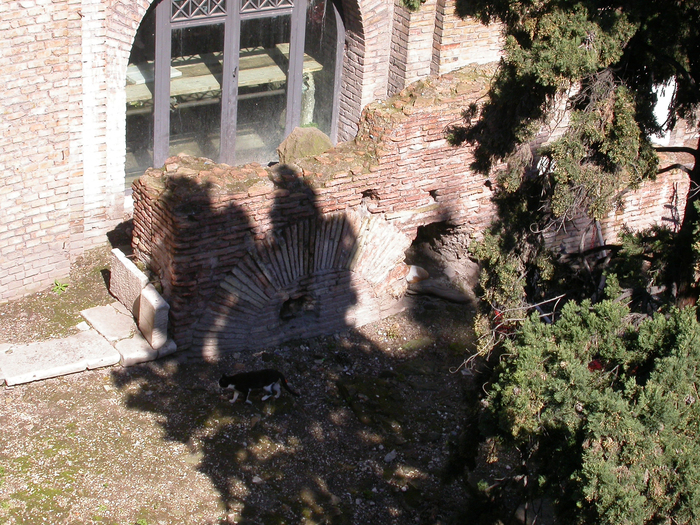
Legend has it that it was on the East portico where Caesar died, with the whole Senate watching. However, there remains a rumor that it was a few steps away, in the nearby latrines, that his attackers overtook him. This story has the ring of truth for me. Even assassins that knew they had the support of a majority of the Senate would have to be unbelievably bold to take down the leader of the Roman empire in public. Catching the noble Caesar with his pants down (or his toga up, as it may be) seems far more likely. So it may have been right about here that Caesar fell...
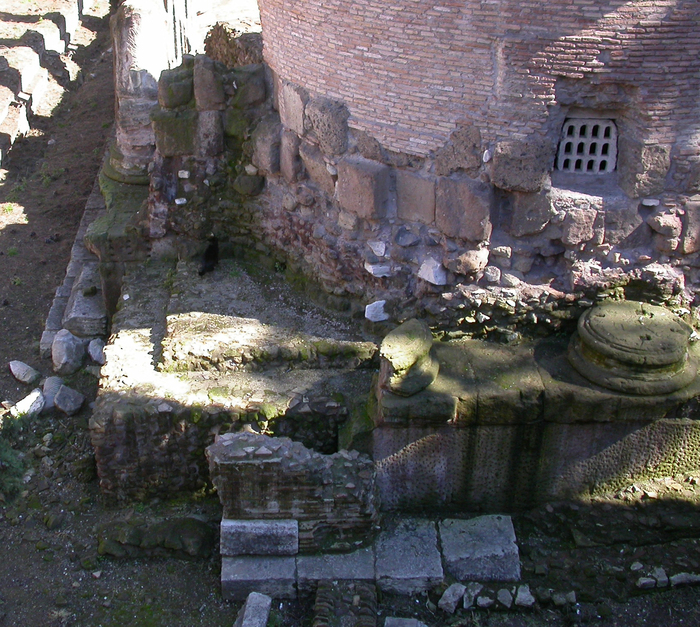
But that was 2000 years ago, and now the remains of the ancient latrine are just a sunny patch for the resident cats.
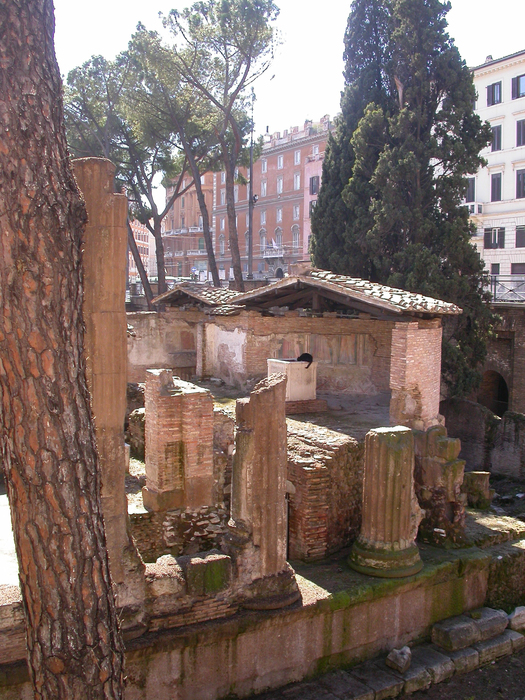
A cat gets a drink of rainwater collected in the ruins of the medieval church. Note the remains of frescos behind him.